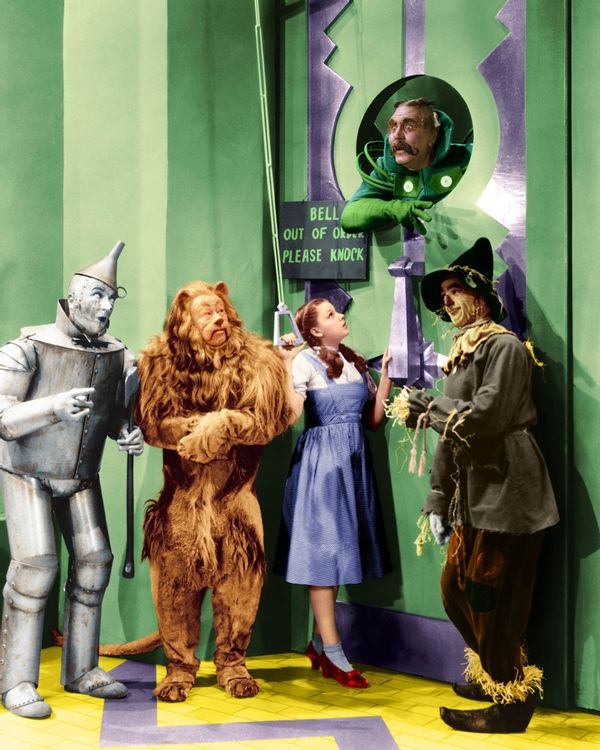
At the turn of the century when children’s literature was rife with moral lessons and cautionary violence, L. Frank Baum set about writing a great American children’s story, free from the cumbersome morality of the time.
Inspiration was all around him – biographers and critics have identified everyone and everything from his mother-in-law to Castle Park in Michigan as reincarnated in "The Wonderful Wizard of Oz." Dorothy was named after a real child, the deceased baby niece of Baum and his wife Maud Gage. But it took an entire century for the inspiration of the Wizard himself to be identified – Washington Harrison Donaldson, balloonist and colleague of famed circus master P.T. Barnum.
Born in Philadelphia in 1840, Donaldson was a gymnast, ventriloquist, a tightrope performer and – like the Wonderful Wizard himself – a magician. His most famous early stunt was to cross the Genesee River in New York on a tight rope 1,800 feet long, at a height of two hundred feet above the water, subsequently re-crossing it while pushing a man in a wheelbarrow in front of him.
Without any prior knowledge of ballooning, Donaldson bartered his way into owning a hot air balloon and debuted as an aeronaut in 1871. He travelled eighteen miles but only after ejecting every loose object from the balloon to enable it to launch. The following year, his balloon burst a mile above the ground in Virginia, and his re-attempt at the flight saw him wrecked among burr chestnut trees and almost killed.

Such a balloon was created, but Wise withdrew from the project at the last minute, leaving the inexperienced Donaldson to pilot the enormous balloon alone. He took two companions with him, recorded as Ford and Lunt, and ascended from the Capitoline baseball ground in Brooklyn, but the balloon never reached the ocean. Donaldson couldn’t control it; he jumped from the basket with Ford but Lunt was too late and died of his injuries six months after the disaster.
In the summer of 1874, P.T. Barnum offered Donaldson engagements from his hippodrome and from then-called Gilmore’s Garden (Madison Square Garden today), in which he escorted multiple passengers and reporters, all of which were successful. His fame and notoriety grew, and in October of that year, a daredevil couple from Cincinnati wished to be married on his balloon, with the ceremony being conducted from the basket in mid-air. At this time he also toured his mammoth new balloon, Will o’ The Wisp, around the Finger Lakes area of upstate New York until it was damaged beyond repair in a fire at Half Way Station.
July 15, 1875, was the 138th and final known voyage of Washington Harrison Donaldson, onboard the balloon P.T. Barnum. He ascended with multiple passengers the day before, at the lakefront in Chicago, but a still day meant the balloon drifted barely three miles before being towed back. It was reported that one of the hippodrome managers chided Donaldson, saying, “What’s the use of this? Why didn’t you go somewhere?”
“Wait until tomorrow,” Donaldson allegedly replied, “and I’ll go far enough for you.”
His eerie response foreshadowed a tragic voyage. The balloon showed a lack of buoyancy after the failed mission the day before, so Donaldson insisted on taking just one passenger with him this time. Newton S. Grimwood, a reporter for the Chicago Evening Journal, drew the "prize" and they set off at 5 pm. They were last seen by the crew of the Little Guide two hours later, trailing through the water, but shot up again before the craft could reach them – as if, they reported at the time, "relieved of some weight."
A great and terrible storm occurred in the region that night, and neither man was heard from again until the body of Newton Grimwood washed up on the banks of Lake Michigan in August, still wearing a life preserver with the notes for his article in his pocket. No trace of Donaldson or the P.T. Barnum has ever been found.
Curiously, Donaldson’s former collaborator John Wise met a similar fate just four years later, when his balloon Pathfinder came down over Lake Michigan. The body of his passenger, George Burr, was found, but his own (nor a trace of Pathfinder) was not.
When faced with two potential heroes of ballooning on which to base his wonderful wizard, L. Frank Baum opted for the magician over the engineer. Adventurous and brave, amiable and with good humor, Washington Donaldson won hearts with his failures as well as his successes. To write a children’s book free from moral judgment means accepting that maybe fortune really does favor the brave, the ill-equipped, and those emboldened by self-belief if nothing else. Heroes can come from unexpected places with extraordinary gifts.
What a wonderful wizard indeed he might have made.







